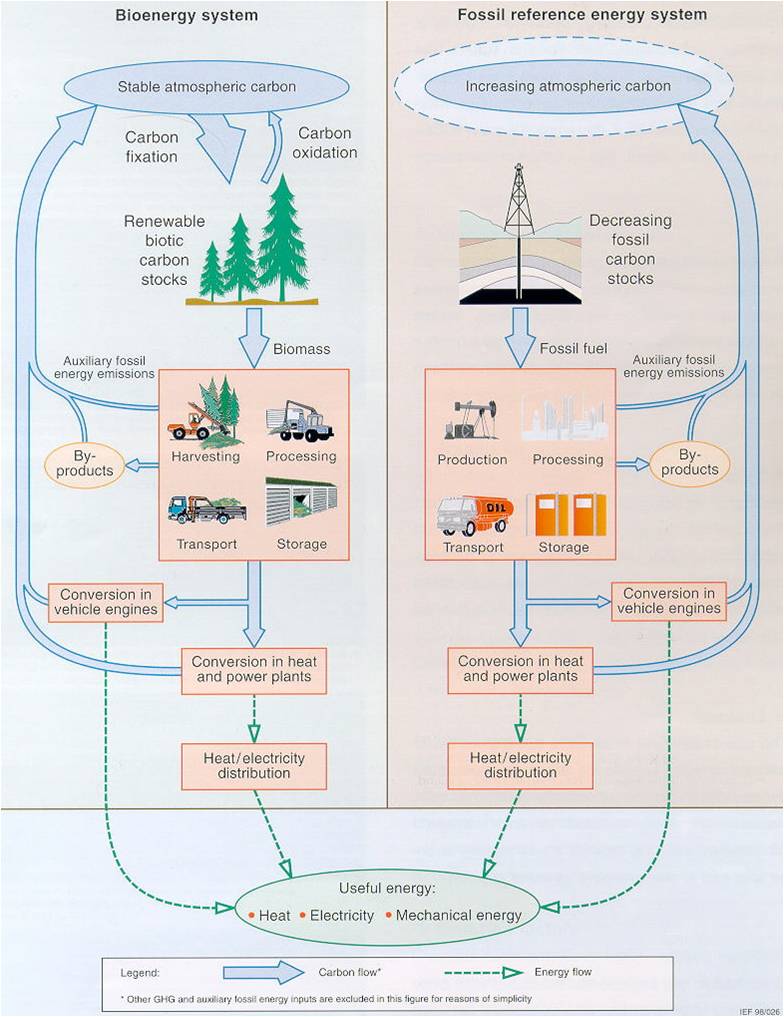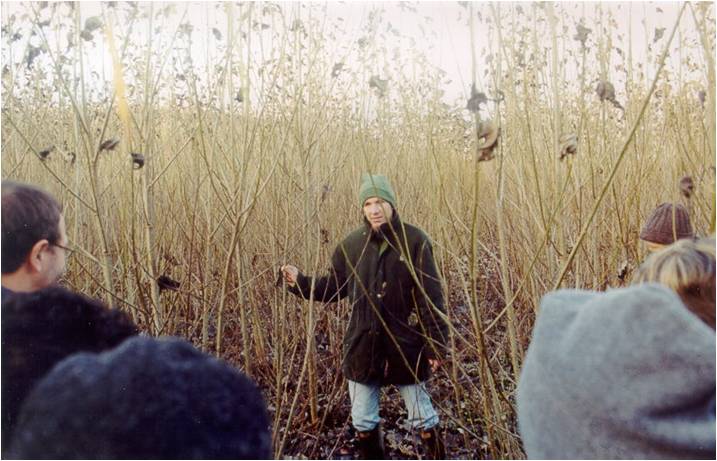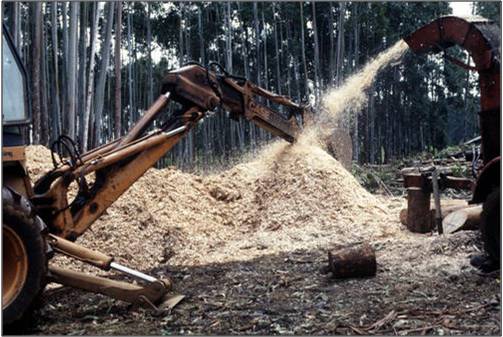This website uses cookies so that we can provide you with the best user experience possible. Cookie information is stored in your browser and performs functions such as recognising you when you return to our website and helping our team to understand which sections of the website you find most interesting and useful.
About
IEA Bioenergy – Task 38
The main drivers for bioenergy are the mitigation of global climate change, the increase in fossil fuel prices, and the concerns about energy security. The reduction of greenhouse gas (GHG) emissions has become an issue of great international importance. Ever increasing: ever increasing evidence of climate change and its impacts, and together with the adoption of the Kyoto Protocol and other regional, national, bilateral and multilateral agreements, have greatly increased augmented interest in reducing GHG emissions and enhancing sequestration by natural systems.
The primary goal of IEA Bioenergy Task 38 on Climate Change Effects of Biomass and Bioenergy Systems is to investigate all processes involved in the use of bioenergy and land-based carbon sequestration systems, with the aim of assessing net climate impacts and supporting decision makers in the selection of GHG mitigation strategies.
IEA Bioenergy
IEA Bioenergy is an international collaborative agreement, set up in 1978 by the International Energy Agency (IEA) to improve international cooperation and information exchange between national bioenergy research, development and demonstration (RD&D) programs. IEA Bioenergy aims to accelerate the use of environmentally sound and cost-competitive bioenergy on a sustainable basis, thereby providing a substantial contribution to meeting future energy demands. IEA Bioenergy brings together national experts from research, government, industry and other stakeholders to advance the state of bioenergy research, policy and implementation.
The work of IEA Bioenergy is undertaken through a series of Tasks, overseen by the IEA Bioenergy Executive Committee. Each Task has a defined work program, coordinated by the Task Leader. In each participating country, a National Team Leader is responsible for coordination of the national participation in the Task. Each participating country pays a contribution towards the Task administration, and provides in-kind contributions to enable national experts to participate in the Task.
This collaboration fosters progress in RD&D of new and improved bioenergy technologies, and development of policy for promotion of sustainable bioenergy systems.
Task 38
IEA Bioenergy Task 38 on Climate Change Effects of Biomass and Bioenergy Systems (previously titled Task 38 on Greenhouse Gas Balances of Biomass and Bioenergy Systems) focuses on understanding the climate change mitigation benefits of bioenergy and carbon sequestration systems. It brings together the work of national programs on GHG balances for a wide range of biomass systems, bioenergy technologies and terrestrial carbon sequestration. The Task considers questions of GHG accounting in the land-use, land-use change and forestry (LULUCF) sector, with application to requirements of the Kyoto Protocol and contributes to the work of the Intergovernmental Panel on Climate Change (IPCC).
Objectives
Task 38 builds on the achievements of predecessor Tasks (Tasks XV and 25) which concentrated on scientific-technical issues and method development. Task 38 focuses on the application of these methodologies to mitigation projects and programs.
Objectives of the Task are:
- increase the understanding of GHG outcomes, on a life-cycle basis, of bioenergy and carbon sequestration, especially for bioenergy technologies approaching a break-through, such as second generation biofuels;
- foster international collaboration and common views of key technical and methodological issues;
- develop, improve, compare and promote methodology for assessing GHG balances of bioenergy and carbon sequestration systems on the project, activity, and regional levels;
- aid decision makers in selecting mitigation strategies that optimise GHG benefits, e.g. allocating biomass to energy vs. use as raw material; considering costs and benefits, as well as the practicalities of different mitigation strategies; and
- assist in the development and implementation of climate change policy, through methodological work for greenhouse gas accounting in the energy and LULUCF sectors.
Standard Methodology For GHG Balances
Task 38 has developed a systematic framework for estimating the net effect on GHG emissions of bioenergy systems. The major aspects of this “standard methodology”, and a schematic structure, are introduced below.
Carbon storage dynamics
The carbon stock in plants, plant debris and soils can change when biomass is grown and harvested. Such changes in carbon stock might extend over long periods of time, after which a new equilibrium is approached, thus necessitating time-dependent analyses.
Trade-offs and synergies
Afforestation or forest protection measures can be effective measures for mitigating the rise of CO2 in the atmosphere, but may compete with biomass production on limited land resources. In such cases trade-offs between biomass harvest and carbon storage in biomass must be considered. An example of synergy is that found in afforestation or reforestation with an integrated production system for wood and bioenergy, in which the stand is thinned to maximize value of wood production, and thinnings are utilized for bioenergy.
 Figure 1 – Standard Methodology
Figure 1 – Standard Methodology
Permanence
Bioenergy provides an irreversible mitigation benefit when it displaces energy consumption from fossil fuels. Mitigation benefits of afforestation or forest protection will be lost if deforestation occurs.
Emission factors
Biomass fuels can have higher carbon emission rates (amount of carbon emitted per unit of energy) than fossil fuels (e.g. oil, or natural gas) due to generally lower energy density of biomass. This fact is only relevant when biomass fuels are derived from unsustainable land-use practices.
Efficiency
The efficiency of bioenergy systems (e.g. energy output per unit of feedstock energy or mass) may in some cases be lower than that of fossil energy systems. Recent technological developments have increased the efficiency of bioenergy systems (e.g. Integrated Gasification Combined Cycle – IGCC).
Upstream energy inputs
Production, transport and conversion of biomass fuels require auxiliary inputs of energy, which must be included in the assessment, as must the energy requirements for the supply of fossil fuels on which the reference energy system is based.
By-products
Bioenergy systems often produce other products besides energy. Bioenergy may be a by-product, for example from a forestry system. In other cases, bioenergy is the main product and non-energy by-products are produced, such as the residue (‘distillers dried grains’) resulting from the corn-to-ethanol process. The emissions and offsets associated with both products and by-products must be estimated and allocated.
Leakage
The use of biomass fuels does not always reduce GHG emissions to the extent suggested by the amount of bioenergy actually used, but rather may increase the total GHG emissions due to increases in emissions outside the system boundary, a phenomenon commonly referred to as “leakage”. Leakage may result from increase in the total energy use, due to greater energy availability, or indirect land use change, where land used for food or feed is converted to bioenergy use, and land use change occurs elsewhere to provide for the displaced agricultural production. Leakage, though difficult to estimate, should be included in assessing the net effect on GHG emissions of bioenergy systems.
Other greenhouse gases
Greenhouse gas emissions associated with both fossil and bioenergy fuel chains include not only CO2, but other gases such as CH4 and N2O that must also be considered.
Highlights Of Task 38 Activities
Frequently Asked Questions
The “Answers to Ten Frequently Asked Questions about Bioenergy, Carbon Sinks and Their Role in Global Climate Change” (FAQ) is a paper that aims to inform industry, scientists, policy makers and interested public about some key issues surrounding these topics.
The FAQ explain:
- The difference between CO2 emissions from bioenergy and from fossil fuels.
- How trees and forests act as a carbon sink.
- The effect of harvesting on carbon sinks.
- The area of land required to supply bioenergy to a power station.
- The area of forest required to offset CO2 emissions from a power station or from running a car.
- The types of trees and crops that are best as carbon sinks or for bioenergy and wood production.
- Land management for carbon sinks, bioenergy and fibre production.
- How the management of land as a carbon sink or for bioenergy production affects other environmental values.
- The potential to reduce greenhouse gas emissions by using bioenergy and through terrestrial carbon sequestration.
- The current availability of technology to allow bioenergy to play a role in reducing atmospheric CO2.

Case Studies
Task 38 applies the standard methodology to specific projects to increase understanding of the mitigation value of bioenergy and sequestration projects. Case studies assess and compare the GHG balances of different bioenergy and C-sequestration projects in the participating countries. Examples of case studies include:
•GHG balance of two alternative bioenergy conversion systems (30 MW wood-fired power station, co-firing in a 500 MW black coal-fired power station) in north-east New South Wales, Australia, utilizing biomass produced through conventional plantation forestry;
- GHG balance of a sawmill in New Zealand, equipped with a combined heat and power (CHP) plant utilising sawmill residues of bark and sawdust. The current bioenergy system is compared to the use of natural gas (reference fossil fuel system);
- GHG balances of sequestration from a forest management program in Canada and emissions reductions for a pyrolysis plant which uses thinnings and sawmill residues as feedstock and produces bio-oil for use in either a pulp mill lime kiln or for export;
- GHG balances of bioenergy and carbon sequestration projects in Finland and Sweden, demonstrating links between increased use of construction wood and the use of biomass-fired cogeneration plants to replace fossil fuels;
- GHG balance of small scale bioenergy solutions providing heat, from Miscanthus and from wood chips in the United Kingdom;
- GHG emissions reduction potential of biodiesel production in Croatia in the context of Joint Implementation;
- GHG budget for use of peat in Ireland;
- GHG mitigation through import of wood pellets form Canada and palm kernel shell from Malaysia for bioenergy in the Netherlands;
- GHG emissions reduction from anaerobic digestion of dairy waste in California, USA;
- GHG emissions from biogas system utilising maize silage in Austria;
- GHG impacts of pellets produced from woody biomass in British Columbia, Canada, and transported to Europe, USA and Canada, substituting fossil fuels in electricity production;
- GHG mitigation value of biochar used as a soil amendment (Australia);
- GHG and energy balance of a biorefinery creating ethanol from forest residues (Austria);
- GHG and energy balance for systems producing biofuels (DME and Fischer-Tropsch) from pulp & paper mill residues, black liquor and other biomass sources (harvest residues and peat) in Finland and Sweden; and
- Comparison of FISCHER-TROPSCH-diesel and CHOREN process for liquid biofuels from woody biomass (short rotation coppice, post-consumer wood and industrial roundwood) (Germany).
Scientific and Technical Support
The Task supports development and implementation of climate change policy through contribution to methodology for project and national scale greenhouse gas inventories, and sustainability assessment, for example regarding approaches for estimating net GHG emissions of from harvested wood products, from afforestation and reforestation and from bioenergy.
Workshops
Each year, one to two workshops on topical issues are organized, attracting experts in the field from around the world, enabling the exchange of ideas and experiences, and providing a creative forum to facilitate collaborative work.
Other Activities
Papers on Special Topics
The Task prepares papers and reports on topical issues. Examples include:
- ‘The Impact of Soil Carbon Change on GHG Balance of Bioenergy Systems’, and
- ‘Options for Trading Bioenergy Products and Services’.
Collaboration with other tasks
Task 38 addresses a cross-cutting issue, relevant to the range of bioenergy technologies that are addressed by other specific tasks. Task 38 works with other tasks to provide expertise on GHG assessment. For example, Task 38 has worked with Task 40 (on biomass trade) and Task 29 (on socio-economic drivers) to consider issues of sustainability of bioenergy.
As the use of biomass increases, especially in more densely populated areas, biomass will be transported and traded over longer distances. Pressure on land use will increase and indirect land use may result. Task 38 is working with other tasks to investigate the GHG aspects of trading biomass in various forms, its role in national policies to reduce net greenhouse gas emissions, the role of biomass trade in fulfilling Kyoto Protocol targets, and how mitigation benefit of traded biomass fuels is included in national GHG inventories and bioenergy policies.

